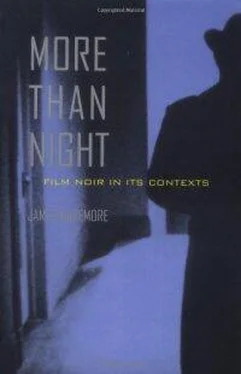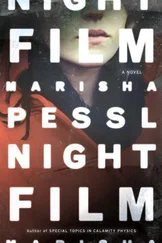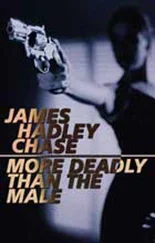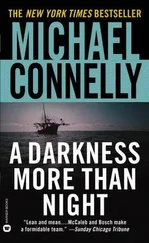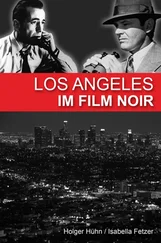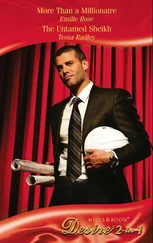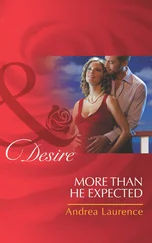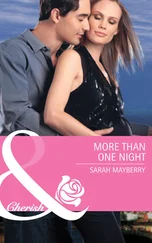I always liked the pictures about urban adventure. As a child at the Saturday matinees, I preferred The Bowery Boys or Boston Blackie to
Roy Rogers. At the most visceral level, I was less a connoisseur of city movies than a lover of the air-conditioned darkness and quicksilver imagery of the theaters themselves, which offered temporary release from the humid southern towns where I lived. In my early adolescence, I often assumed a semifetal position, knees against the seat in front of me, absorbed not so much in the stories as in the photography, performance, and sound. What I remember best are the fetishized detailsLizabeth Scott's unreal blondness and husky voice in Dark City, or Edmond O'Brien's rumpled suit as he runs desperately down the crowded street in D. O.A.
Later in the decade, after I began to acquire an artistic interest in movies, my imagination was fired by black-and-white photography and melodramatic danger. This was the age of Elvis and Cinemascope, but I was stunned by Killer's Kiss, a cheap thriller about which I had heard nothing. (I can recall exiting the theater and searching the poster outside to find that the name of the director was Stanley Kubrick.) I especially liked such films when they offered nonconformist philosophical or social criticism and when their endings seemed a bit less than happy. Among my favorites were the rereleases of Detective Story (a police procedural about a violent cop who learns that his wife once had an abortion), The Asphalt Jungle (a blow-by-blow account of an attempted robbery, in which the criminals are the most sympathetic characters), and Ruthless (a rise-to-success narrative that depicts the hero as a heel). I was equally affected by first-run showings of The Wrong Man (a true story about an innocent man accused of a crime), End as a Man (a frightening portrait of a charismatic young sadist in a southern military school), Sweet Smell of Success (a dark satire about an influential Broadway columnist and a sleazy press agent), and Attack! (an antiwar movie in which most of the officers are either insane or corrupt). For similar reasons, I was delighted by the blending of menace and iconoclasm in a couple of escapist pictures about romance and suspense: His Kind of Woman and Strangers on a Train. During those years, I bought a paperback reprint of Raymond Chandler's Simple Art of Murder and virtually memorized the tough-guy cadences of the title essay. I also saw part of an Orson Welles picture for the first timethe grotesquely sinister opening sequence of Journey into Fear, which I glimpsed late at night on a snowy television set.
How intriguing to discover, long afterward, that I had been living through the last decade of historical film noir. I say "historical" because the basic term can refer both to the present-day cinema and to an extinct
genre. The temporal distinction seems important, and yet it is also simplistic or misleading. Most contemporary writing and filmmaking associated with noir provokes a mourning and melancholy for the past, made all the more poignant because the objects being mourned are still with us on TV. To use a specifically Freudian language (which many of the old films themselves seem to elicit), our contemporary fascination with noir may entail a sort of Nachträglichkeit, or a method of dealing with the present by imagining a primal scene. The memories I have just recorded are no exception; they are influenced by things that happened afterward, and they omit many features of the complex popular culture I once experienced.
The term film noir was barely known in America when I went through what André Breton calls "the cinema age." But it was not completely unknown. In a recent anthology of writings on the subject, Alain Silver and James Ursini have published a 1956 photograph of director Robert Aldrich, standing on the set of Attack! and holding a copy of Raymond Borde and Étienne Chaumeton's Panorama du film noir américain. Perhaps Aldrich was trying to tell us something about his workor perhaps he was merely acknowledging the fact that Borde and Chaumeton greatly admired his previous picture, Kiss Me Deadly. At any rate, during the years before the classic Hollywood studios were completely reorganized, before a wave of innovative European cinema began to enter the American market, and before I myself had ever heard of film noir, several pictures that today's critics often describe as noir cohered in my own mind and helped to give me a sense of movies as an art.
More than Night pays these and other movies like them an indirect tribute, offering a wide-ranging and synoptic discussion of American film noir between 1941 and the present. My topic is large, and in covering such an extensive time period I inevitably fail to mention some important titles. For example, I decided to keep influential directors such as Alfred Hitchcock and Orson Welles, about whom I have written elsewhere, slightly at the margins of my studythis despite the fact that the burning "R" at the end of Rebecca and the burning ' 'Rosebud" at the end of Citizen Kane echo one another, and despite the fact that both films are crucial to the way we think about Hollywood in the 1940s. I nevertheless discuss European and British pictures that influenced Hollywood, and I pay a good deal of attention to the French intellectual context in which the idea of noir was first articulated. I also nominate neglected titles as films noirs, or at least question their absence in previous writings, and I explore the noir elements of the other media in some detail.
In order to do justice to the paradoxes of history, I shuttle back and
forth in time. The reader will find that my early chapters have more to do with classic Hollywood and that my later ones are increasingly concerned with the present day. Even so, the book is not strictly chronological, and (somewhat like the old Hollywood moguls) I do not expect that everyone will consume what I have produced in linear fashion. I can only suggest that those who want to understand my general assumptions should go directly to the first chapter, which is my true introduction and touches upon most of my themes. In chapter 1, I contend that film noir has no essential characteristics and that it is not a specifically American form. I also try to confirm the truth of a recent observation by J. P. Telotte, who says that all arguments about the nature of noir have "as much to do with criticism itself, especially with the varying ways that we define film genres," as they do with our putative objects of study. 1Telotte's point was reinforced for me shortly after the first draft of my chapter was written, when I saw Quentin Tarantino's Pulp Fiction. At the beginning of that movie, two gangsters talk about the difference between cheeseburgers in Paris and cheeseburgers in the United States. One of them notes that "Cheese Royale" sounds better than ''Big Mac." Along similar lines, I would suggest that because "film noir" sounds better than a good many American terms that might be used, it has affected the way we view certain mass-produced items.
Like almost every other critic, I begin by calling attention to the fact that film noir is an unusually baggy concept, elaborated largely after the fact of the films themselves. I suspect, however, that the often-expressed critical concern over the term's meaning and utility may arise out of a misunderstanding of how generic or historical concepts are formed. The logic of genre construction has not been my primary interest, but it may help to note in passing that much can be learned about such matters from cognitive scientist George Lakoffs Women, Fire, and Dangerous Things (1987), which sounds rather like a film noir. (Interestingly, the 1932 adaptation of The Maltese Falcon was called Dangerous Female, and the working title for the Billy Wilder-Raymond Chandler adaptation of Double Indemnity was Incendiary Blonde .) Lakoff is a powerful critic of the Aristotelian notion that categories are made up of items with common propertiesa notion also rejected by empirical research and by such diverse theorists as Ludwig Wittgenstein, J. R. Austin, and Jacques Derrida. Virtually all contemporary language philosophers agree that people do not form concepts by placing similar things together. Instead, they create networks of relationship, using metaphor, metonymy, and forms of imaginative association that develop over time. As a result, every important term in art criticism indicates something like the "family tree" that British critic Raymond Durgnat once used to describe film noir.
Читать дальше
